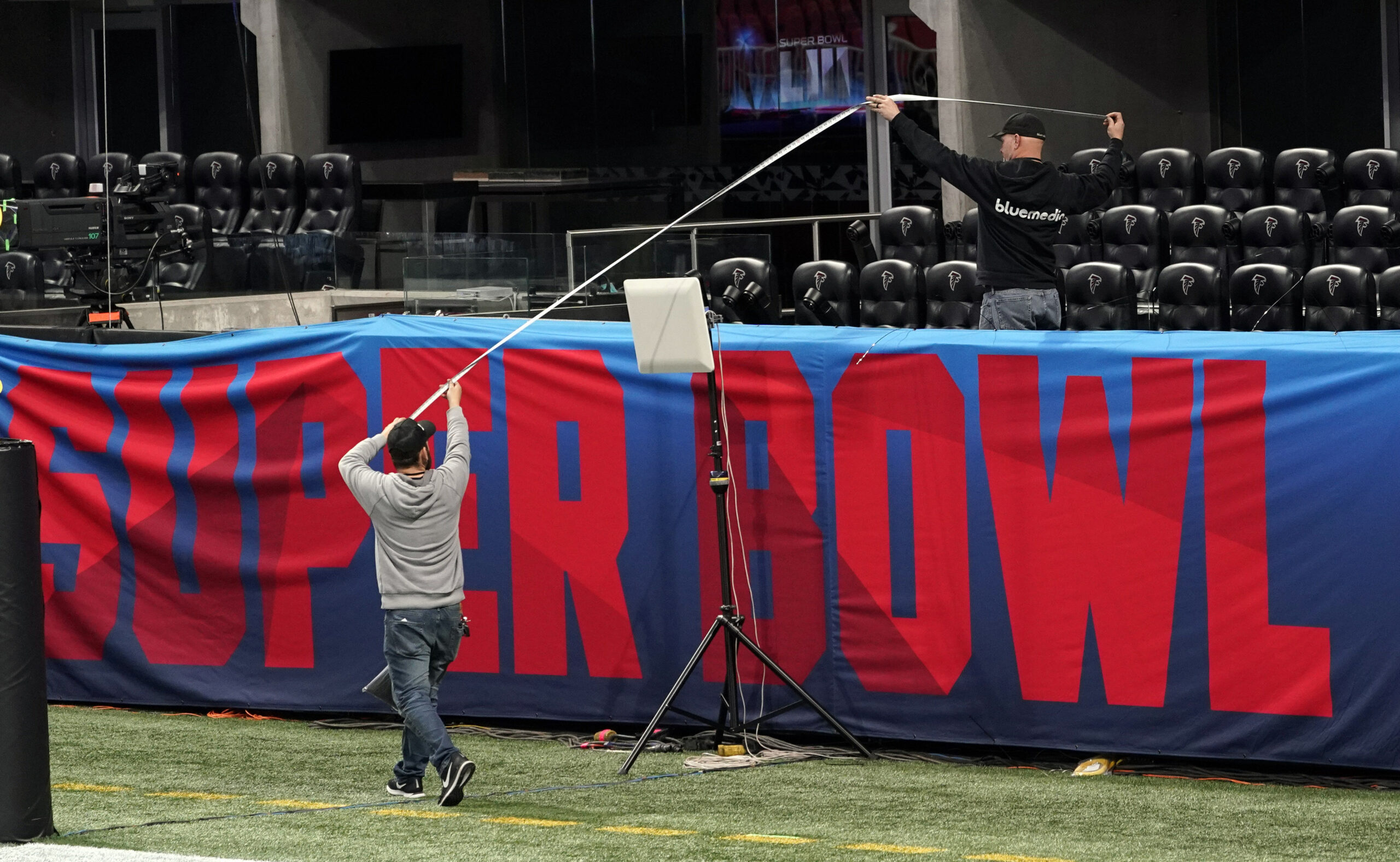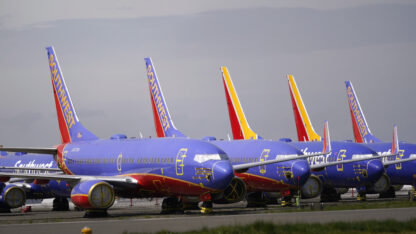What’s Up With The Gliding Helicopter In Atlanta

Workers use a tape measure as they hang a sign inside Mercedes-Benz Stadium Super Bowl 53.
David J. Phillip / Associated Press
Nothing to see here — just a low-flying helicopter in town testing for naturally occurring radiation. The chopper was seen earlier this week in Atlanta. It’ll be back for Game Day on Sunday.
The helicopter is surveying parts of downtown Atlanta and Buckhead for gamma rays. It’s all part of security measures for the Super Bowl.
The flyovers are conducted by the National Nuclear Security Administration, an agency within the Department of Energy.
“The measurement of naturally occurring radiation to establish baseline levels is a normal part of security and emergency preparedness,” the department said.
The missions are standard for high-profile events such as the Boston Marathon, presidential inaugurations and New Year’s Eve in Las Vegas. They’re also used for sweeps around nuclear plants.
Choppers are ideal for these types of surveys because they fly close to the ground and travel slowly. That helps with accurate measurements. The twin-engine Bell 412 helicopter in Atlanta flies at at least 150 feet at approximately 80 mph.
Russell Malchow, mission manager of the tests in Atlanta, said helicopters are ideal for these tests because they can hold large detectors that can collect lots of gamma rays.
“The detectors are single crystals of sodium iodide,” Malchow said. “And when a gamma ray hits this crystal it releases a pulse of light.”
He said local agencies already have technology to test for radiation.
“What they don’t have is the expertise that we have in flying the equipment and interpreting the aerial data,” he said.
The team testing for gamma rays in Atlanta are seven people: two pilots, a mechanic, an equipment specialist, a data analyst, mission scientist and the mission manager.
The technology to test radiation using aircraft has existed for decades.
The first time it was used in a Super Bowl was in Phoenix in 2008.
Correction: This story has been updated to reflect the correct date for the first use of this aircraft technology to test for radiation in a Super Bowl.








